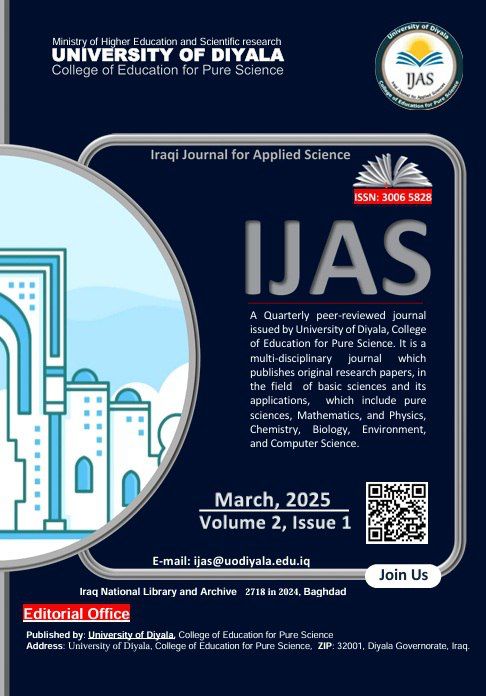Abstract
Benign prostatic hyperplasia (BPH) is a non-malignant tumor of the
prostate that enlarges prostate tissue and reduces the flow of urine from
the bladder. The study aimed to investigate the relationship between
certain physiological parameters (body mass, diabetes, smoking, firstand second-degree consanguinity, prostate-specific antigen (PSA) and
testosterone (TES)) with the risk of benign prostatic hyperplasia. The
study included 100 samples, divided into two groups: the first group
consisted of 50 patients, and the second group consisted of 50 healthy
controls. The results revealed that the majority of patients were
underweight (36.0%), while a small percentage were obese (12.0%).
Similarly, the majority of the control group were underweighted
(60.0%), with only a small percentage being overweight (10.0%). The
differences in BMI between the two study groups were statistically
significant (p<0.05). There were also significant differences in
hemoglobin A1c (HbA1c) levels between the two groups. The
cumulative glucose test showed that 44.0% of patients with prostate
enlargement had elevated cumulative glucose levels, compared to 0.0%
in the healthy control group. The results further indicated that most of
the patients had relatives with the disease (46.0%), with 34.0% having
second-degree relatives and 20.0% having first-degree relatives affected
by the disease. The differences in the percentages of kinship degrees
were statistically significant (p<0.05). Additionally, the study found
significantly higher PSA levels in patients (11.18±4.06) compared to
healthy controls (3.27±1.35). Conversely, testosterone levels were lower
in patients (1.74±0.45) compared to healthy controls (6.33±1.80). The
differences in hormone levels between the two groups were also
statistically significant (p<0.05). The study concluded showed that PSA
levels are higher in patients compared to controls, and there is a
relationship between high levels of diabetes and hormone metabolism
and low levels of TES compared to control.
prostate that enlarges prostate tissue and reduces the flow of urine from
the bladder. The study aimed to investigate the relationship between
certain physiological parameters (body mass, diabetes, smoking, firstand second-degree consanguinity, prostate-specific antigen (PSA) and
testosterone (TES)) with the risk of benign prostatic hyperplasia. The
study included 100 samples, divided into two groups: the first group
consisted of 50 patients, and the second group consisted of 50 healthy
controls. The results revealed that the majority of patients were
underweight (36.0%), while a small percentage were obese (12.0%).
Similarly, the majority of the control group were underweighted
(60.0%), with only a small percentage being overweight (10.0%). The
differences in BMI between the two study groups were statistically
significant (p<0.05). There were also significant differences in
hemoglobin A1c (HbA1c) levels between the two groups. The
cumulative glucose test showed that 44.0% of patients with prostate
enlargement had elevated cumulative glucose levels, compared to 0.0%
in the healthy control group. The results further indicated that most of
the patients had relatives with the disease (46.0%), with 34.0% having
second-degree relatives and 20.0% having first-degree relatives affected
by the disease. The differences in the percentages of kinship degrees
were statistically significant (p<0.05). Additionally, the study found
significantly higher PSA levels in patients (11.18±4.06) compared to
healthy controls (3.27±1.35). Conversely, testosterone levels were lower
in patients (1.74±0.45) compared to healthy controls (6.33±1.80). The
differences in hormone levels between the two groups were also
statistically significant (p<0.05). The study concluded showed that PSA
levels are higher in patients compared to controls, and there is a
relationship between high levels of diabetes and hormone metabolism
and low levels of TES compared to control.
